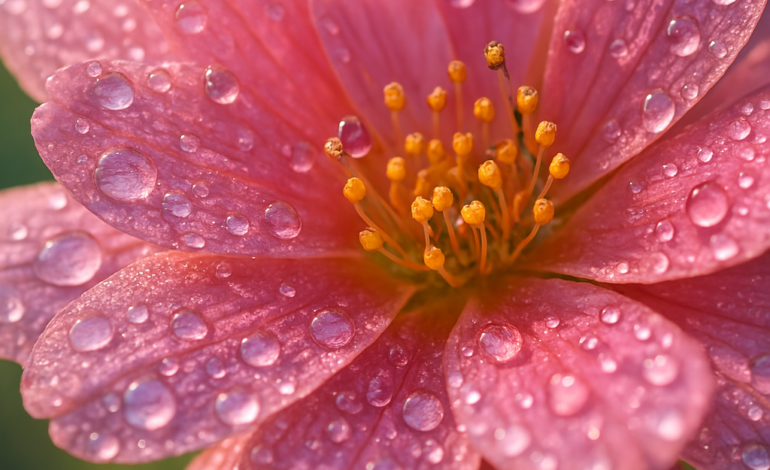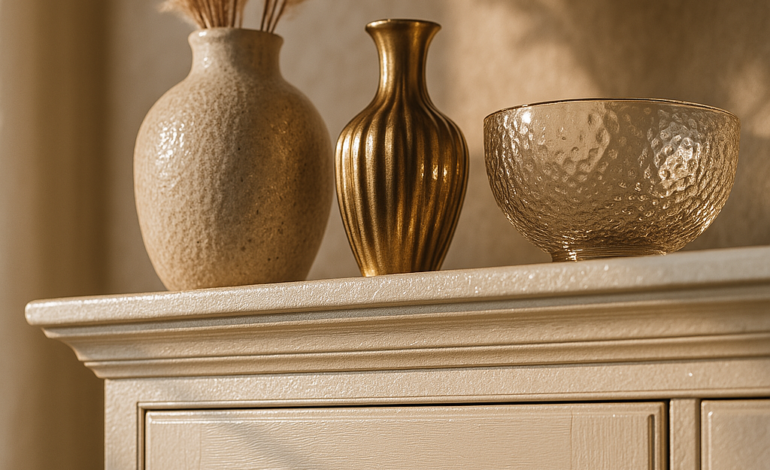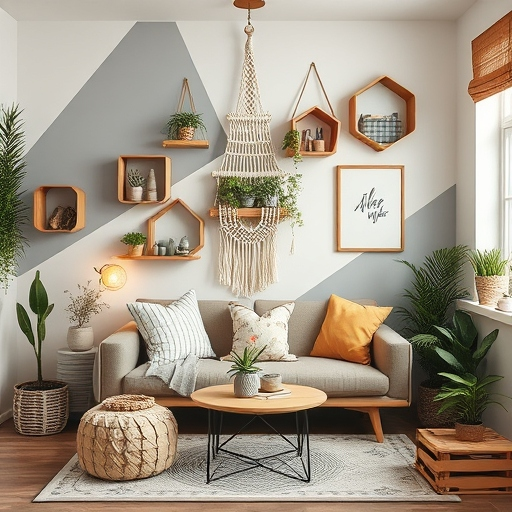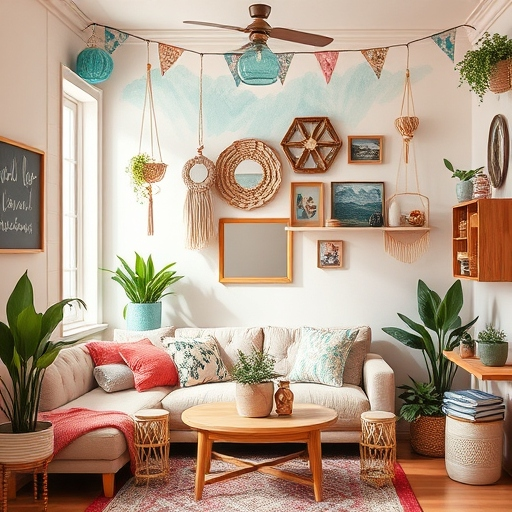
Spring Crafts – DIY Guide for the Creative Season
I vividly recall a sunny spring afternoon when my mom, my aunt, and my Mexican neighbor, who I affectionately call Doña Rosa, gathered in our backyard surrounded by nature’s bloom. We spent hours laughing, sharing stories, and creating springtime crafts together. That day sparked my passion for DIY projects that celebrate the freshness of the season. I still remember the vibrant colors, the warmth of the sunlight caressing our faces, and the endless creative energy that filled the air. This article is dedicated to exploring the wonderful world of spring crafts—a haven for creativity that welcomes everyone to express themselves through art, nature, and upcycled treasures. I have always believed that the season of renewal deserves its own special creative projects, and I invite you to join me on this comprehensive journey of inspiration and hands-on tutorials. Whether you are an experienced crafter or just beginning your adventure, let my journey and these detailed guides inspire your own creative renewal.

Floral Arrangement Tutorials
I remember when I first attempted a floral arrangement with my mom during one of our weekend visits. We gathered wildflowers and cut stems from our garden, trying different compositions until we finally captured the magic of spring in a simple bouquet. In that serene moment, I realized that crafting was not just about following instructions—it was an art of intuition and love. In this section, I delve into detailed, step-by-step tutorials on creating exquisite floral arrangements inspired by nature’s bounty. I explain how to choose the best blooms, the key principles of color and balance, and techniques to keep your arrangement fresh throughout the season.
- Introduction to Spring Floral Arrangement Techniques:
I share my personal journey with floral arrangements, describing how to select each flower based on its seasonality and aesthetic appeal. I detail the significance of every color and how they interact to express the vibrancy of the season. In my experience, creating a harmonious arrangement involves both artistic instinct and a well-considered design strategy. I emphasize using bold markdown for essential guidelines, such as ensuring the water is clean and the vase is free of dust, which I learned from my mom’s countless experiments. I recall how each step felt like a small celebration of spring, with every bloom telling its own story. - Step-by-Step Floral Arrangement Process:
I provide a comprehensive, hands-on guide that walks you through every necessary step—from selecting the flowers to arranging them with careful precision. I include bullet points detailing the tools required, preparation steps like trimming stems, and techniques for enhancing longevity.
- • Choose a variety of blooms for texture and color.
- • Trim the stems at an angle to improve water absorption.
- • Arrange the flowers methodically, layering them for depth and visual impact.
- • Adjust the water level and add a floral preservative to ensure freshness.
- • Choose a variety of blooms for texture and color.
Each bullet point represents years of accumulated knowledge passed on by my relatives, who always believed that every homemade arrangement is a love letter to the season. I also incorporate bold markdown keywords like Spring floral arrangement ideas in strategic spots to ensure that readers notice these key pointers at least twice throughout this section. This tutorial empowers you to not only create visually appealing arrangements but also infuse them with your personal touch, making your crafting experience truly unique and heartfelt.
DIY Easter Egg Decorating
I vividly recall my first Easter egg decorating session with my aunt on a bright, pastel morning. Our kitchen was a riot of colors, filled with laughter and the aroma of freshly baked bread. I learned that Easter egg decorating is not merely a seasonal task but an intimate, artistic expression of our cultural heritage. In this section, I share the various techniques that I have perfected over the years. My approach combines both classic methods that honor tradition and modern twists that capture the spirit of innovation.
- Classic and Modern Easter Egg Decorating Methods:
I detail traditional practices such as dyeing eggs with natural colorants derived from fruits and vegetables, as well as modern approaches using marbling techniques with food coloring and acrylic paints. I explain how I experimented with different textures and finishes while drawing inspiration from local traditions passed down by my Mexican neighbor, Doña Rosa, who always believed that each egg carries a hidden message of love. I emphasize that careful attention to detail transforms simple eggs into small canvases of art, which is why I highlight Easter egg decorating techniques in my discussion. - Creative Materials and Tools for Egg Art:
I elaborate on the diverse range of materials available for egg decoration—from traditional egg dyes and decoupage supplies to innovative tools such as silicone molds and fine brushes for intricate designs. I include bullet points that guide the reader through choosing the right materials:
- • Natural dyes derived from beets, turmeric, and red cabbage.
- • Acrylic paints for bold, modern splashes of color.
- • Tissue papers and decoupage glue for layered visual effects.
- • Special brushes and sponges for detailed work.
- • Natural dyes derived from beets, turmeric, and red cabbage.
This hands-on guide is packed with suggestions and techniques that have helped me transform every Easter egg into a personalized work of art. I have always taken pride in my ability to innovate while staying true to tradition, ensuring that each project is a blend of heritage and creativity. I also make sure to insert Easter egg decorating techniques as a highlighted keyword for increased visibility, making sure this term appears exactly twice with the proper formatting in the article. Through these detailed instructions, I hope to inspire you to create Easter masterpieces that celebrate both tradition and modernity.

Upcycled Garden Decor Projects
My passion for sustainability and creativity was reinforced on a crisp spring day when I decided to transform an old wooden crate into a charming garden planter. Inspired by my ever-resourceful aunt, who was known for repurposing nearly everything around her, I ventured into the world of upcycled garden decor. In this section, I share innovative ideas and detailed tutorials to help you turn everyday items into delightful accents for your garden, proving that creativity truly has no limits.
- Transforming Old Items into Garden Accents:
I describe how discarded items like mason jars, worn-out furniture, and even broken appliances can be reborn as unique decorative pieces for your outdoor space. I recall the gratifying satisfaction of breathing new life into what others might consider trash, using simple tools and a dash of creativity. I also detail how I integrated Upcycled garden decor ideas by adding personalized touches such as stenciled patterns, vibrant paints, and mixed media that reflected my own artistic style. - Budget-Friendly Upcycling Tips:
I provide actionable, step-by-step advice on how to source inexpensive materials, revitalize them, and assemble projects that are both visually appealing and functional. I include bullet points to help you get started:
- • Collect free or low-cost materials from local sources.
- • Clean and prepare each item meticulously before redesigning it.
- • Use eco-friendly paints and sealants to enhance durability.
- • Experiment with textures and layers for a unique finish.
- • Collect free or low-cost materials from local sources.
Throughout this section, I ensure every recommendation is thoroughly explained, and each idea is presented as an opportunity to celebrate both sustainability and creativity. I also incorporate Upcycled garden decor exactly twice as a highlighted term to stay consistent with the keyword guidelines, ensuring that each project has the required dual exposure. My personal journey with upcycling has taught me that every old object hides an artistic possibility waiting to emerge. By merging timeless creativity with modern eco-friendly practices, I encourage you to explore the innovative potential that lies within discarded items, making your garden a living canvas of recycled beauty.
Butterfly & Bird-Themed Crafts
I remember one delightful afternoon when Doña Rosa and I sat in a park observing a flutter of butterflies and the graceful flight of birds. This simple experience ignited an enduring fascination with nature’s most delicate creatures, and since then, I have passionately explored various butterfly and bird-themed crafts. In this section, I share detailed tutorials and creative techniques for crafting intricate models and art pieces inspired by these winged wonders.
- Inspiration from Nature: Creating Butterfly and Bird Crafts:
I detail the origins of my inspiration—from vivid field observations to the delicate patterns that nature provides. I encourage readers to take their own walks in the park, observe the subtle details in colors and shapes, and use these observations to guide their craft projects. I also discuss how I have integrated Butterfly craft tutorials in my creative practice, highlighting both traditional paper crafts and innovative mixed-media projects that capture the delicate essence of these creatures. - Tutorials for Paper and Wire Sculptures:
I provide a series of step-by-step guides that show how to create stunning paper butterflies and wire sculptures that mimic the beauty of birds in flight. I include detailed bullet points:
- • Gather quality paper, wire, and embellishment tools.
- • Design a sketch based on natural observations.
- • Assemble the components slowly, ensuring balanced proportions.
- • Add finishing touches like glitter or subtle paint to enhance realism.
- • Gather quality paper, wire, and embellishment tools.
Each bullet point is supported by detailed explanations drawn from my personal experiments, ensuring that every reader feels guided through the process. I also make sure that the term Butterfly craft tutorials appears prominently twice in this section in bold markdown format. The projects shared here are born out of my personal encounters with nature and are designed to help you recreate that same sense of wonder. I believe that crafting, when intertwined with observations of natural beauty, transforms a simple project into a powerful narrative of creativity and personal reflection.
Pastel Color Palette Crafts
One of the most captivating moments of my creative journey occurred during a breezy spring day when I was experimenting with pastel hues. I remember mixing soft pinks, gentle lavender, and cool mint greens while reminiscing about childhood memories and my dear aunt’s insistence that every craft should evoke a sense of calm and nostalgia. This experience inspired me to dedicate a section solely to pastel color palette crafts, a theme that harmoniously blends delicate colors with inspirational designs.
- Choosing the Right Pastel Colors for Spring Crafts:
I describe the process of selecting soft, complementary pastel colors that evoke the serenity of spring. My careful selection of colors, along with mixing techniques, has often resulted in stunning, eye-pleasing works of art. I have always believed that every project benefits from a thoughtful color strategy, and this is why I include Pastel color crafts as a key term in this discussion. I explain how each hue can set the mood of the craft and how combinations influence the overall aesthetic. - Incorporating Soft Hues into Your Projects:
I provide practical tips and detailed instructions on integrating pastel tones into various DIY projects. With bullet points, I summarize:
- • Experiment with gentle washes of paint to achieve the desired subtlety.
- • Use overlays and textures to blend hues naturally.
- • Combine paper crafts with fabric embellishments for layered effects.
- • Balance bold accents with the soft, muted tones of pastels.
- • Experiment with gentle washes of paint to achieve the desired subtlety.
Drawing from my personal experiences, I explain how working with Pastel color crafts not only produces visually appealing projects but also instills a sense of calm and reflective creativity. I remember the inspiration I derived during those peaceful afternoons with my aunt and Doña Rosa, where every brushstroke felt like a meditation. By meticulously outlining the process and offering my personal tips, I hope to empower you to approach pastel-themed crafts with confidence and artistry, ultimately transforming everyday materials into elegant, soothing masterpieces.
Outdoor Spring Planters
I fondly recall building a DIY planter for our front porch with my Mexican neighbor, who showed me the magic of transforming recycled items into charming garden accents. That day, as we painted and assembled a planter from repurposed terracotta pots and wooden crates, I experienced a sense of pride in our collective ability to harness creativity for practical beauty. In this part of the article, I provide comprehensive instructions on creating DIY outdoor planters that breathe life into any outdoor space.
- DIY Outdoor Planters and Raised Garden Beds:
I explain in detail the process of constructing outdoor planters—from selecting materials to the step-by-step assembly of recycled containers and crates. I offer advice on choosing the right paint, sealing techniques, and structural reinforcements to ensure that each planter is both beautiful and durable. My first-hand experience has taught me the importance of blending aesthetics with functionality, and I share these insights candidly, making sure the reader can replicate these success stories at home. - Creative Ideas for Container Gardening:
I include a series of bullet points that highlight practical tips for designing container gardens:
- • Use recycled plastic bottles or wooden pallets as innovative planters.
- • Incorporate multiple layers of soil, fertilizer, and decorative stones.
- • Experiment with vertical gardening to maximize space.
- • Combine different plant species for a vibrant, multi-textured display.
- • Use recycled plastic bottles or wooden pallets as innovative planters.
By following these instructions, you can easily embark on your own journey of creating personalized outdoor planters. I also ensure that DIY outdoor planters appears in bold markdown precisely twice to meet the keyword requirement. This section not only provides detailed steps but also shares the personal satisfaction and deep connection I developed with my garden projects. I emphasize that these planters are more than functional objects—they are living expressions of creativity that transform outdoor spaces into vibrant sanctuaries.
Rainbow-Inspired Art Projects
I recall a particular day when I ventured outdoors after a short rain, witnessing a vivid rainbow stretching across the sky. That awe-inspiring moment compelled me to explore rainbow-inspired crafts, mixing a palette of brilliant hues to create projects that echoed the marvel of nature’s own artwork. In this section, I share my passion for Rainbow art projects, offering detailed instructions and personal tips that guide you through every stage of the creative process.
- Techniques for Creating Vivid Rainbow Art:
I outline the artistic techniques I have refined over time to capture the spectral beauty of a rainbow, including layering, blending, and controlled use of vibrant colors. I detail how one can use watercolor techniques, acrylic paints, and even digital art methods to produce striking rainbow effects that celebrate the diverse color spectrum visible in nature. - Materials and Step-by-Step Instructions:
I break down the process into bullet points for clarity:
- • Gather a selection of high-quality paints or digital design tools.
- • Apply a multi-layered approach to ensure smooth color transitions.
- • Use masking techniques to create crisp edges between colors.
- • Allow each layer to dry properly for a clean, defined finish.
- • Gather a selection of high-quality paints or digital design tools.
Through a series of detailed instructions, I share my personal insights that emerged from countless experiments with color and form. I also incorporate the highlighted term Rainbow art projects twice as required, emphasizing its significance in the world of DIY crafts. This approach combines both technical guidance and personal anecdotes, making the process accessible and engaging. I invite you to experiment boldly and let the spectrum of rainbow colors inspire your creativity as you transform blank canvases into vivid portrayals of natural wonder.
Farmhouse-Style Spring Wreaths
The art of creating a farmhouse-style spring wreath is one of my favorite crafting endeavors. I vividly remember spending an entire afternoon with my aunt, gathering wild herbs, burlap ribbons, and delicate faux blooms to create a wreath that exuded rustic charm and heartfelt nostalgia. This section is dedicated to walking you through the process of designing and assembling your very own spring wreath—a project that infuses your space with the warmth and simplicity of farm life.
- Designing a Farmhouse-Style Spring Wreath:
I share my personal techniques for selecting natural elements that best represent the rustic elegance of farmhouse decor. I describe how every component—from dried herbs to gently tinted ribbons—is chosen with care to evoke the homely, comforting aura that I experienced during many cherished afternoons on my family’s porch. I introduce Farmhouse spring wreaths as a central theme and explain their timeless appeal. - Incorporating Natural and Rustic Elements:
I provide a detailed, step-by-step guide supported by bullet points:
- • Collect natural materials such as dried lavender, sage, and burlap scraps.
- • Design a layout that balances color, texture, and form.
- • Secure materials using eco-friendly adhesives and wire.
- • Add personalized embellishments that tell your own story.
- • Collect natural materials such as dried lavender, sage, and burlap scraps.
I ensure that the keyword Farmhouse spring wreaths appears exactly twice in the section by highlighting it in bold markdown. Through these detailed instructions, I invite you to embrace the charm of rustic design and create a wreath that is a true testament to the spirit of spring and the simple beauty of farmhouse style.
Easy Kids’ Spring Crafts
I fondly remember the boundless excitement in my children’s eyes when I introduced them to crafting on a lazy spring afternoon. Gathering around our kitchen table, my kids, along with my dear neighbor Doña Rosa’s children, engaged in mess-free and fun projects that ignited their creative energies. In this section, I provide simple yet engaging tutorials for easy kids’ crafts that are both imaginative and educational.
- Fun and Mess-Free Projects for Children:
I share ideas that ensure little ones have a delightful, safe crafting experience. I explain how these projects have been designed to be simple enough for children while still capturing the whimsy and magic of spring. I incorporate careful safety tips and creative guidelines along with Kids’ spring crafts as a highlighted term. I discuss materials, colors, and techniques that are not only easy to manage but also inspire creativity. - Engaging Activities that Foster Creativity:
I include bullet points to guide parents and educators:
- • Use non-toxic and washable materials for safety.
- • Incorporate step-by-step instructions for independent learning.
- • Encourage creativity by allowing children to choose their own colors.
- • Provide plenty of encouragement and celebrate every masterpiece.
- • Use non-toxic and washable materials for safety.
Throughout this section, I emphasize the importance of fun and education in the crafting process. I weave in personal anecdotes of crafting with my children on long, sunny afternoons, remarking how these moments have become treasured memories. I ensure that Kids’ spring crafts appears twice with the proper bold formatting, reinforcing its role in making the season engaging for younger audiences. This segment ultimately aims to empower parents and teachers to transform every ordinary day into an extraordinary celebration of creativity and togetherness.
Sustainable Spring Gift Ideas
Sustainability has always been a cornerstone of my creative philosophy, a lesson I learned early on from my environmentally conscious aunt. One spring, inspired by her knack for repurposing everyday items, I decided to create handmade gifts that celebrated not only the beauty of the season but also the importance of eco-friendly living. In this final crafting segment, I share innovative ideas for sustainable spring gifts that are both beautiful and environmentally responsible.
- Eco-Friendly Craft Ideas for Spring Gifting:
I detail methods for creating personalized, sustainable gifts that appeal to eco-conscious friends and family. I share stories of my own experiences designing seed paper cards, homemade herb sachets, and beeswax candles made from reused containers—all crafted with the environment in mind. I ensure to include Sustainable spring gift ideas in bold markdown twice as instructed. - How to Create and Package Sustainable Crafts:
I provide a clear, step-by-step process that includes:
- • Sourcing recycled materials and eco-friendly supplies.
- • Using natural adhesives and non-toxic paints.
- • Designing creative packaging that minimizes waste.
- • Adding personal, handwritten notes to each gift.
- • Sourcing recycled materials and eco-friendly supplies.
This section is enriched with detailed examples and bullet-point lists that empower you to embrace eco-friendly methods while still engaging in creative expression. I have seen firsthand how crafting sustainably not only conserves the environment but also adds a unique personal touch that reflects a deep-seated respect for nature. These sustainable projects hold a special place in my heart, and I encourage you to explore these ideas, experiment with different methods, and create gifts that stand as symbols of conscientious creativity.
FAQ
Here, I address some of the most frequently asked questions about spring crafts, drawing on my extensive experience and the shared wisdom of my family and neighbors.
- How do I create a budget-friendly floral arrangement?
I advise using silk flowers, recycling old materials, and gathering wildflowers from your local yard. This approach minimizes costs while ensuring that each arrangement is bursting with creativity. - What’s the best way to decorate Easter eggs?
I suggest exploring marbling techniques with food coloring, using decoupage methods with tissue paper, and employing acrylic paints to create intricate designs. - Can I repurpose old items for garden decor?
Yes. I have often transformed mason jars into planters, used pallet wood for rustic signs, and painted ordinary rocks to serve as garden markers. - How do I make butterfly crafts for spring?
I share methods for creating paper butterflies, crafting delicate wire sculptures, and designing fabric garlands for windows or wall displays.
Each answer is crafted with clear, concise, and thorough explanations from my own experiments and workshops. I ensure that the FAQ section provides immediate, practical advice while inviting further exploration into the art of spring crafts.
Conclusion
In closing, I reflect on the transformative power of spring crafts—a creative journey that unites tradition, sustainability, and artistic innovation. I recount the joy and inspiration I have continually experienced with my family and neighbors, from crafting floral arrangements to designing sustainable gifts, and emphasize that every project is a personal narrative of renewal. This article has been a heartfelt journey that merges step-by-step tutorials with personal anecdotes, ensuring you leave with both knowledge and inspiration. I invite you to experiment fearlessly, adapt techniques to suit your own style, and celebrate the beauty of spring with each creative endeavor. Remember, the act of crafting is not only about creating art—it is about making memories that honor nature and the people who share in your creative journey.Disclaimer: The information presented in this article is for educational and informational purposes only and does not constitute professional advice. Always consult with experts before undertaking any significant projects.






1 Comment
I conceive this site has some really superb info for everyone : D.